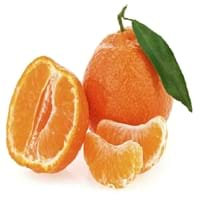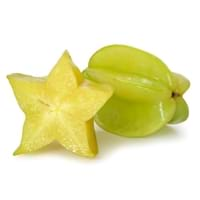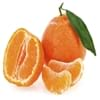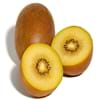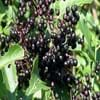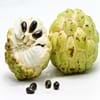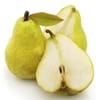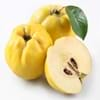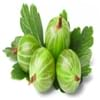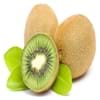Health Benefits
Cancer prevention, Heart care, Increases metabolic rate, Reduces stress
Cancer prevention, Heat stroke treatment
General Benefits
Boosts immune system, Controls blood pressure, Digestive aid, Eye care, Helps in weight loss
Anti oxidant properties, Anti-inflammatory properties, Digestive aid, Maintains healthy cholesterol level, Treatment of sore eyes
Skin Benefits
Brightens and lightens complexion, Treatment of acne, Treatment of dark spots
Anti-aging benefits, Heals sunburn, Skin rejuvenation
Hair Benefits
Promotes longer and healthier hair, Protects hair
Promotes longer and healthier hair, Protects hair
Allergy Symptoms
Abdominal pains, Breathing difficulty, Coughing, Diarrhea, Drop in blood pressure, Fainting, Runny nose, Skin rash, Sneezing, Swelling of mouth, tongue or lips, Vomiting
NA
Side Effects
Allergic reaction
Nausea, Vomiting
Best Time to Eat
As a snack in the late afternoon, Don't consume at night and before bed, Eat the fresh ones, avoid mixing with any other foods, don't eat after meal., Morning time (before lunch)
As a snack in the late afternoon, Eat the fresh ones, avoid mixing with any other foods, don't eat after meal., Strictly avoid empty stomach
Vitamin A (Retinol)
Not Available
Vitamin B5 (Pantothenic Acid)
Vitamin C (Ascorbic Acid)
Vitamin K (Phyllochinone)
Lutein+Zeaxanthin
Not Available
Calories in Fresh Fruit with Peel
Not Available
Calories in Fresh Fruit without Peel
Not Available
Calories in Frozen Form
Not Available
Not Available
Calories in Dried Form
Not Available
Calories in Canned Form
Not Available
Not Available
Calories in Jam
Not Available
Calories in Pie
Not Available
Season
Autumn
Autumn, Spring, Summer
Varieties
Clemenules or Nules and Nadorcott
King, Bell, Sri Kembangan, Arkin and Fwang Tung
Color
Orange
Golden yellow, Green
Inside Color
Orange
Yellowish Green
Shape
Round
Oval and Star(Cross section)
Taste
Sweet, Tangy, Tart
Crisp, Juicy, Sweet
Grows on
Trees
Not Available
Soil Type
Loam, Sandy, Well-drained
Loam, Well-drained
Climatic Conditions
Warm to hot climate
Moist, Warm to hot climate
Facts about
- Clementine was first grown at the citrus research center in USA in 1909.
- It is called as"Christmas orange" as it's limited growing season falls during winter.
- It's a hybrid between Mediterranean and Oranges.
- When carambola is cut horizontally, it forms a star.
- It is believed that carambola helps to cure hangover.
- Entire carambola is edible, including its skin.
- 2 varieties of carambola are cultivated: tart & sweet.
Top Producer
Spain
Taiwan
Other Countries
Argentina, Brazil, Egypt, Italy, Japan, Morocco, Turkey, United States of America
Australia, Guyana, India, Israel, Malaysia, Philippines, United States of America
Top Importer
United States of America
Europe
Top Exporter
Spain
Malaysia
Botanical Name
Citrus clementina
Averrhoa carambola
Synonym
Not Available
Not Available
Subkingdom
Tracheobionta
Tracheobionta
Division
Magnoliophyta
Magnoliophyta
Class
Magnoliopsida
Magnoliopsida
Order
Sapindales
Oxalidales
Family
Rutaceae
Oxalidaceae
Species
C. clementina
A. carambola
Generic Group
Citrus fruit
Not Available
Difference Between Clementine and Carambola
We might think that Clementine and Carambola are similar with respect to nutritional value and health benefits. But the nutrient content of both fruits is different. Clementine and Carambola Facts such as their taste, shape, color, and size are also distinct. The difference between Clementine and Carambola is explained here.
The amount of calories in 100 gm of fresh Clementine and Carambola with peel is Not Available and 31.00 kcal and the amount of calories without peel is 47.00 kcal and Not Available respectively. Thus, Clementine and Carambola belong to Low Calorie Fruits and Low Calorie Fruits category.These fruits might or might not differ with respect to their scientific classification. The order of Clementine and Carambola is Sapindales and Oxalidales respectively. Clementine belongs to Rutaceae family and Carambola belongs to Oxalidaceae family. Clementine belongs to Citrus genus of C. clementina species and Carambola belongs to Averrhoa genus of A. carambola species. Beings plants, both fruits belong to Plantae Kingdom.
